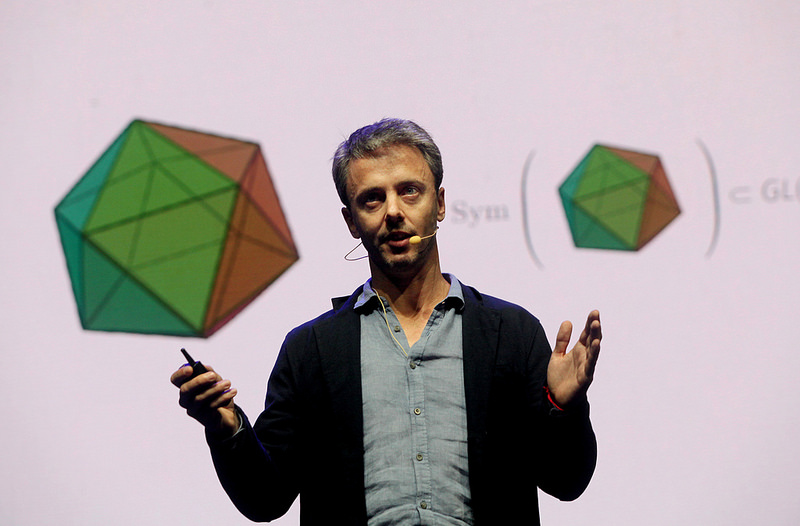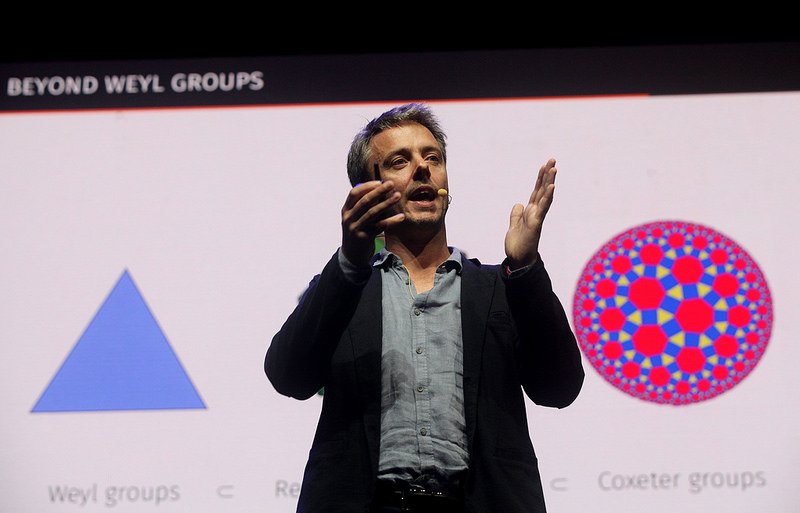August 8, 2018, 1:58 pm

Australian representation theory expert Geordie Williamson delivered a dynamic lecture at ICM 2018 today, extending the concept of symmetry to number systems where 1 + 1 = 0. The talk explored the recurring appearance of geometric techniques in seemingly algebraic problems, and his straightforward and charismatic approach was a crowdpleaser.
In representation theory, problems often have an algebraic nature, so the tendency is to think it’s an algebraic subject. “Yet,” Williamson shared “throughout history, the deepest theories often first have geometric proofs. So you’re led to ask, what precisely is geometry providing in representation theory?”
Read more:
The young University of Sydney professor revealed his techniques using symmetric groups for representation theory. “If you’re wondering how I go from geometry to invariant forms – I’m thinking about something like an integral providing a Hilbert space structure or an intersection form in cohomology,” he explained. He uses a feature related to invariant forms called hidden semi-simplicity. Where semi-simplicity is a definite form, hidden semi-simplicity is knowing the signature of that form. “Semi-simplicity is a little like the air we breathe in representation theory,” he explained. “In initial situations, it’s everywhere, but when you go further and further out, you lose semi-simplicity.”
He left the audience with a video of a dynamical system and what he called a mystery for the 21st century about the applications of his line of research in non-rational polytopes and matroids. “What I found most exciting was the introduction of new dynamical systems, which has the keys to give the answers to all sorts of questions in algebra, although we don’t understand why,” said geometry expert and University of Sydney colleauge Anthony Henderson of Williamson’s lecture.
It’s been a strong run for Australian mathematicians. Williamson not only became the youngest member to be admitted to the prestigious Royal Society but won the European Mathematical Society Prize in 2016. Akshay Venkatesh became the country’s second Fields medallist this year, after Terrence Tao’s 2006 win, and Nalini Joshi is the newly elected vice-president of the IMU.
Handfuls of fellow mathematicians rushed to congratulate him at the end of his lecture. Michael Atiyah, the eminent 1966 Fields winner, approached him to say that he gave a brilliant talk and considered him to be like a great-grandson in mathematics.
